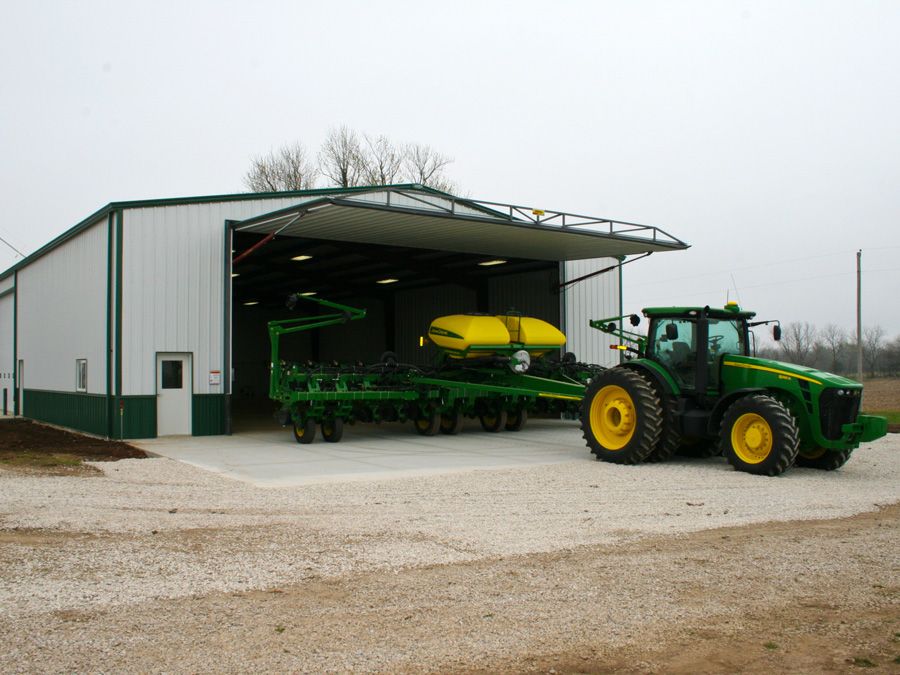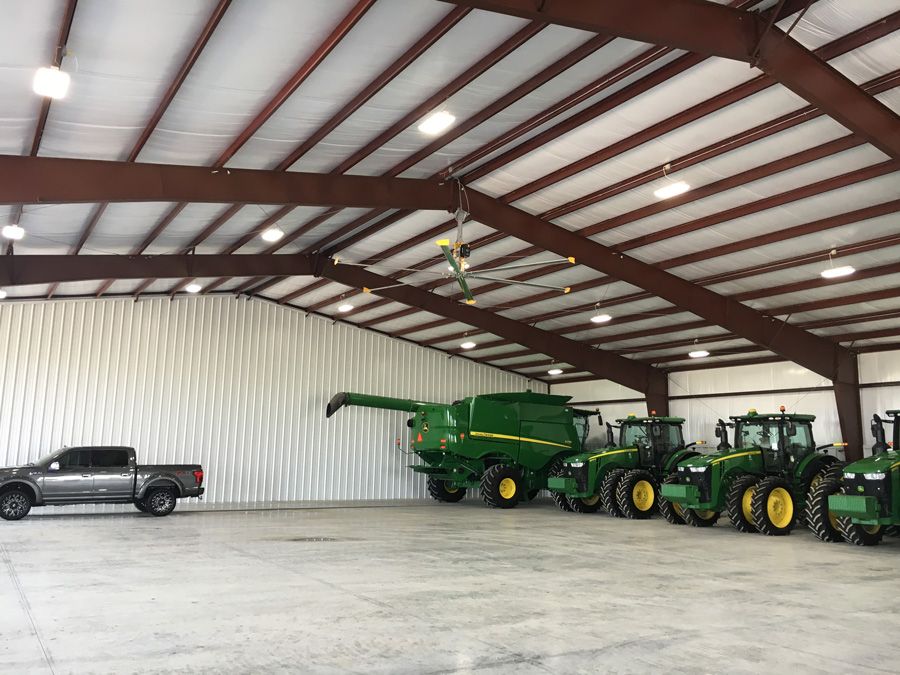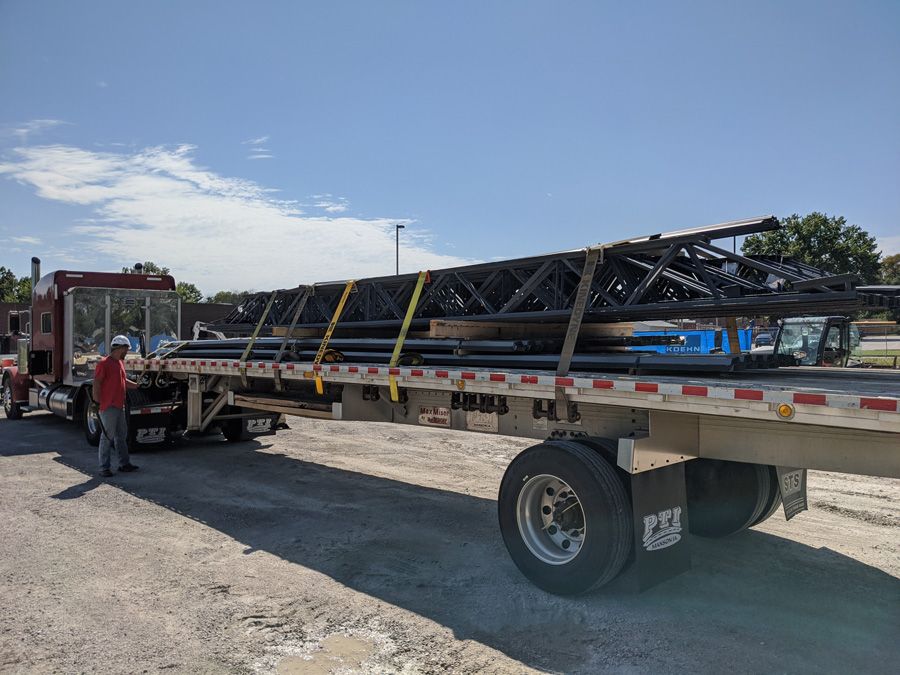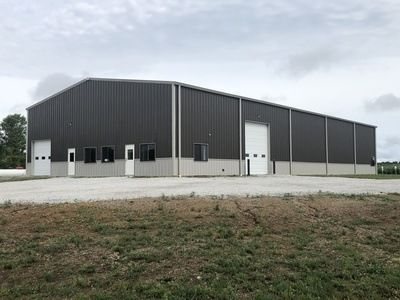
Pole Barns Vs. Pre-Engineered Metal Buildings for Agricultural Construction Projects
At Koehn Building Systems, we specialize in the design and construction of many types of pre-engineered metal buildings (PEMB) and agricultural buildings . One of the most common types of agricultural buildings we construct are steel buildings for barn storage. These steel buildings are a great substitute for traditional pole barn buildings.
What Is a Pole Barn Building?
A pole barn, or pole building, is a common type of agricultural building. This type of agricultural building is typically built with no basement and features high ceilings and large, open spaces.
How Is a Pole Barn Different Than a Metal Building System?
While a pole barn does typically include the use of metal wall panels on the building’s exterior, there are a few key differences between pole barn and metal building construction.
The main difference between pole barns and pre-engineered metal buildings (PEMB) is the construction process and level of durability.
Instead of a traditional foundation, pole barn builders construct pole barns by placing a series of prefabricated laminated wooden poles into the ground or within concrete at specific locations. These wooden poles serve as the interior frame to carry the load and support the structure. The exterior of a pole barn can still be made using prefabricated metal panels or traditional siding options.
Pre-engineered metal buildings (PEMB) are built on a standard concrete foundation and are constructed using non-combustible materials. These steel buildings are made with a steel frame, steel roof and wall structurals, and steel wall and roof panels. Each part of a pre-engineered metal building system is manufactured in a controlled environment and then assembled later on site. Having steel framing throughout instead of the mix of wooden poles yields numerous advantages.
| Pole Barns | Pre-Engineered Metal Buildings | |
|---|---|---|
|
Durability |
More susceptible to the elements |
High durability |
|
Maintenance |
Standard maintenance |
Low maintenance |
|
Frame |
Wood frame |
Steel frame |
|
Exterior |
Steel panels or traditional siding options |
Steel roof and walls |
|
Wall Openings |
Supports standard wall openings |
Supports extra-large wall openings (doors, windows, etc.) for large equipment |
|
Interior Supports |
Requires support walls or poles throughout |
Does not require support walls due to large clear span |
|
Initial Build Cost |
Low Cost |
Medium Cost |
|
Long-term Cost of Ownership |
Medium Cost |
Low Cost |
Achieve Superior Barn Storage with Our Metal Building Construction
At Koehn Building Systems, our steel building construction experts recognize the numerous benefits that come with pre-engineered metal building construction for barn storage. Just a few benefits of steel building construction include:

Enhanced Durability
Pole barn buildings are more susceptible to storms, termite damage, water damage, and wood rot. Steel buildings are fire-and-weather-resistant, making them a far more durable option.

Larger Wall Openings
Without the placement of the posts used by pole barn builders, pre-engineered metal buildings can allow for extra-large wall openings for doors and windows, thus making these buildings perfect for storing agricultural equipment and machinery.

Expansive Interiors
In steel buildings, interior support walls and support poles are not required due to a much larger clear span. This allows for more expansive interior spaces, ideal for barn storage, workshops, large farm equipment storage, and other agricultural buildings.

Cost-Effective
With their increased durability, metal building systems require less maintenance and cost less to insure than pole barn buildings, making them a more cost-effective option for agricultural buildings.
Why Choose Our Steel Building Construction Team Over Pole Barn Builders
At Koehn Building Systems, our metal building construction team efficiently designs and erects durable barn storage, agricultural buildings, and other pre-engineered metal buildings that meet each of our customers’ specific needs. To learn more about working with our metal building construction team, or to get started on your next agricultural building project, contact our pre-engineered metal building experts today !
Steel Building Project Highlights
For a closer look at our metal building construction capabilities, check out a couple of projects our steel building contractors have completed!
Metal Building Construction Frequently Asked Questions (FAQ)
Do you only build steel buildings for agricultural clients?
No! While metal building systems are an excellent choice for agricultural buildings, they also serve as great spaces for commercial and industrial businesses across the Midwest. To learn more about our metal building construction services for both commercial and agricultural businesses, contact our pre-engineered metal building team today!
Do you only design and install pre-engineered metal buildings (PEMB)?
While we specialize in metal building construction, we also provide traditional stick framed building construction when necessary. However, we often find that steel buildings are the preferred building method for agricultural clients.
Is it cheaper to build a pole barn or a metal building?
Great question! Metal buildings are typically less expensive in the long run than pole barns, as metal buildings have a stronger foundation, require less maintenance than pole barns, and are built with higher quality materials.
How long do steel buildings last?
Due to their increased durability, most steel buildings last anywhere from 50 to 100 years!
Getting Started with Koehn Building Systems
If you’re interested in working with our firm or learning more about our services, feel free to give us a call at 417-395-4305 or fill out our contact form online. We would love the opportunity to work on your next construction project!
Content Reviewed by Steve Koehn


